28 Years Later: The Heavens Fall, But Still We Crawl
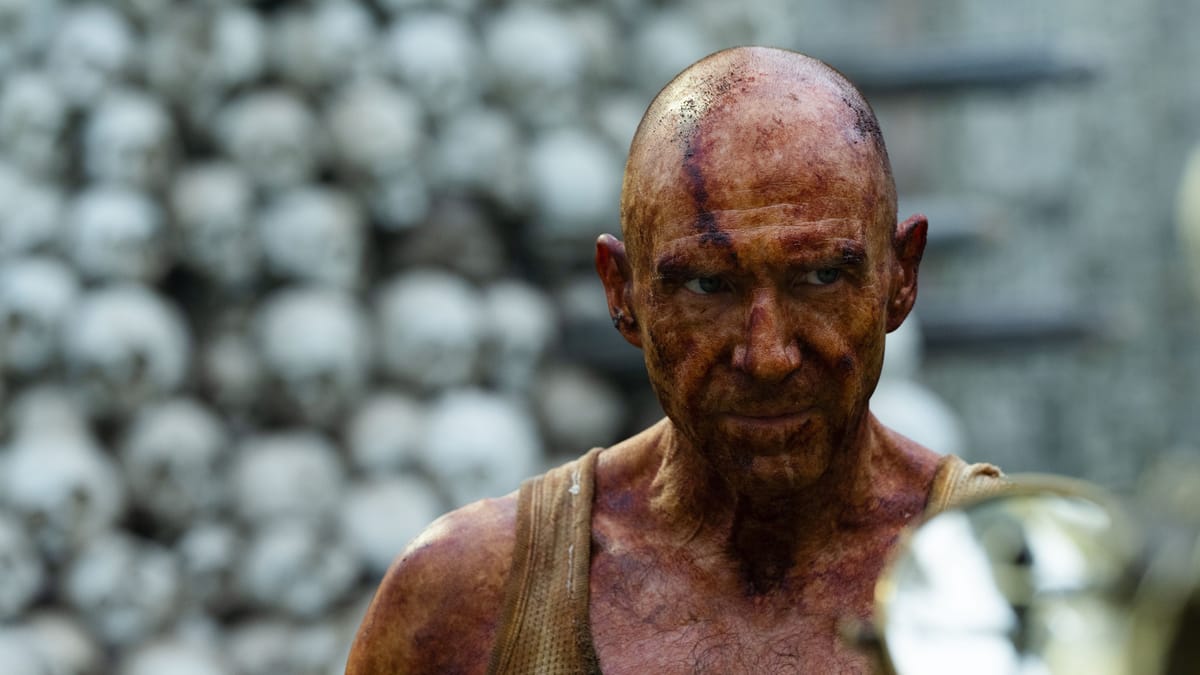
How many hundreds of years have we fallen this time?
The apocalypse as cultural time dilation, decades sanding down the thin line of civility that once separated us from the monsters ravaging the landscape. Isolation has destroyed us, the bridges we once built to unite us across great distances now eroded by nature and harsh militarism, locked away and thrust into regression and misery. Love upended by fear, survivalism clawing away at all that was built in the pursuit of something better. 28 years have passed and the remnants of the world we left behind have been long forgotten, replaced by staunch traditionalism and reinforced cultural ideologies, returning to ritualistic rites and patriarchal structures, reputations built on the glory of death as sport, sustained by a barbaric lack of empathy that focuses only on the able-bodied, leaving behind those cursed to suffer from the maladies we once sought to eradicate.
The outside world is little more than a memory to the United Kingdom, and a memory only sustained by the few remaining who were around to witness its collapse. There is no normal to be sustained, and no progress to be sought – this insular world has slid backwards, a medieval state where small, isolated villages scratch at survival and fear the world beyond their walls. It is a landscape of violence against what they do not understand, of oral folk history that paints everything as myth and legend. Humanity is eroding, its own infectious death that threatens to destroy us in ways we could not have imagined.
Those born into this chaos know nothing different, yet to suffer the consequences of this erosion, instilled with a hope that has been washed away from everyone else. It's eerily familiar, all of it, as we watch the world around us crumble at the hands of regression and erosion, our isolation infecting the populace with both fear and rage. Cinema reflects the reverberating waves of destruction that the pandemic has wrought, and though writer Alex Garland can't help but wield that sentiment with a signature stark bluntness, his return to collaborating with director Danny Boyle makes it all a welcome allegory for our cultural destruction. These two artists at their best have always offered insight into the brutality of the human condition through elaborate genre lenses, whether by way of blood-soaked zombie cinema as seen through DV scuzz or the desolate isolation of space as we hurtle toward the unimaginable power of the sun.
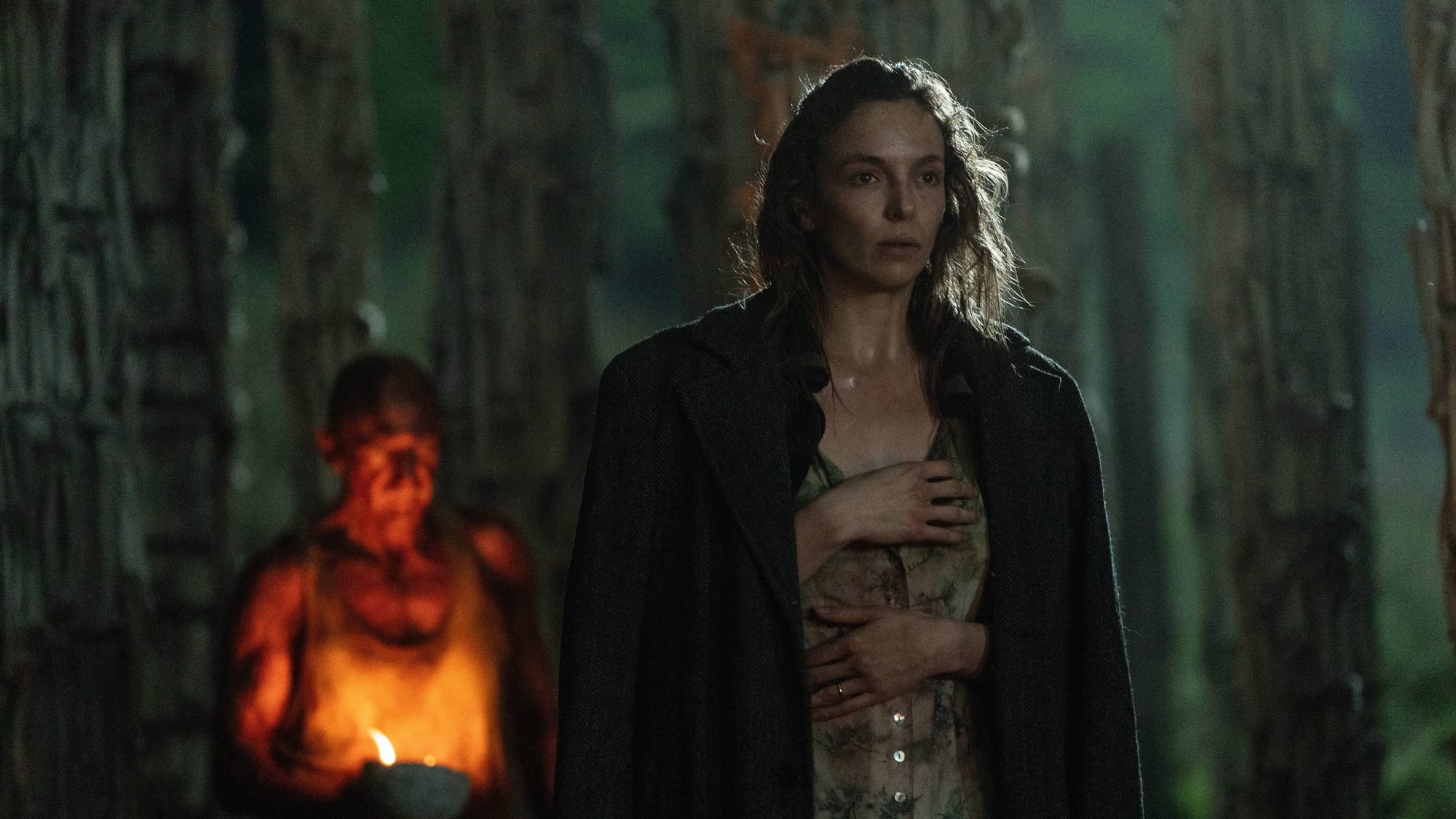
28 Years Later transposes the harsh digital haze of its predecessor onto an updated modern vision, using the ingrained visual language of Britain to imbue a sense of contemporary hopelessness onto an apocalypse that exists beyond the boundaries of modern malaise. It is post-conservativism, ripped apart and left to rebuild within the constricting, oppressive ideologies that have been so fervently fought for throughout the country's history. But these ideologies reverberate, so deeply rooted in British culture that even the mindless infected have regressed into violent patriarchal structures, ruled by Alphas who ruthlessly command troops of infected and commit horrific acts of ritualistic violence. It's all shown as a reflection, these parallels between those infected by the rage virus and the humans surviving on the quarantined British Isles slowly reaching a convergence point. While men enact initiation rituals of bloodshed and death to imprint their values upon their children, shrouding themselves in lies and delusion, the infected in turn find moments of tenderness, giving birth to something new.
This is not an endorsement of nihilism, as much as it may present the rapid regression of humanity into embracing our worst traits. As a reflection of the consequences of these tendencies, it's all too familiar – the echoes of the pandemic, of Brexit, of the way rage spreads like a virus when we're offered the opportunity to fall headfirst into its void. Some accept it, welcoming the ability to become rabid and violent, begging for the sweet release of morality under the guises of religion or seeking some stray chance to betray your loved ones in the search of immediate pleasures. There is brutality and evil in this world, and it spreads like wildfire when we allow these voids of emotion to dry the landscapes of our existence so it can all go up in flames, but we are not lost.
28 Years Later is a film about empathy, about rejecting the structures that are holding us back in favor of sacrificing everything for the tiniest glimmer of hope. It is about refusing to accept the very nihilism that is so easy to embrace, a plea to the generation who have been abandoned by the Earth-shattering moments that have slid us into regression and misery. Accepting the cycles we've become trapped within only further ingrains the suffering, doomed to a life of hopelessness and death as everyone in the surrounding refuses to make any attempt to make things better. Every potential risk is an excuse to push these agendas of regression and conservativism.
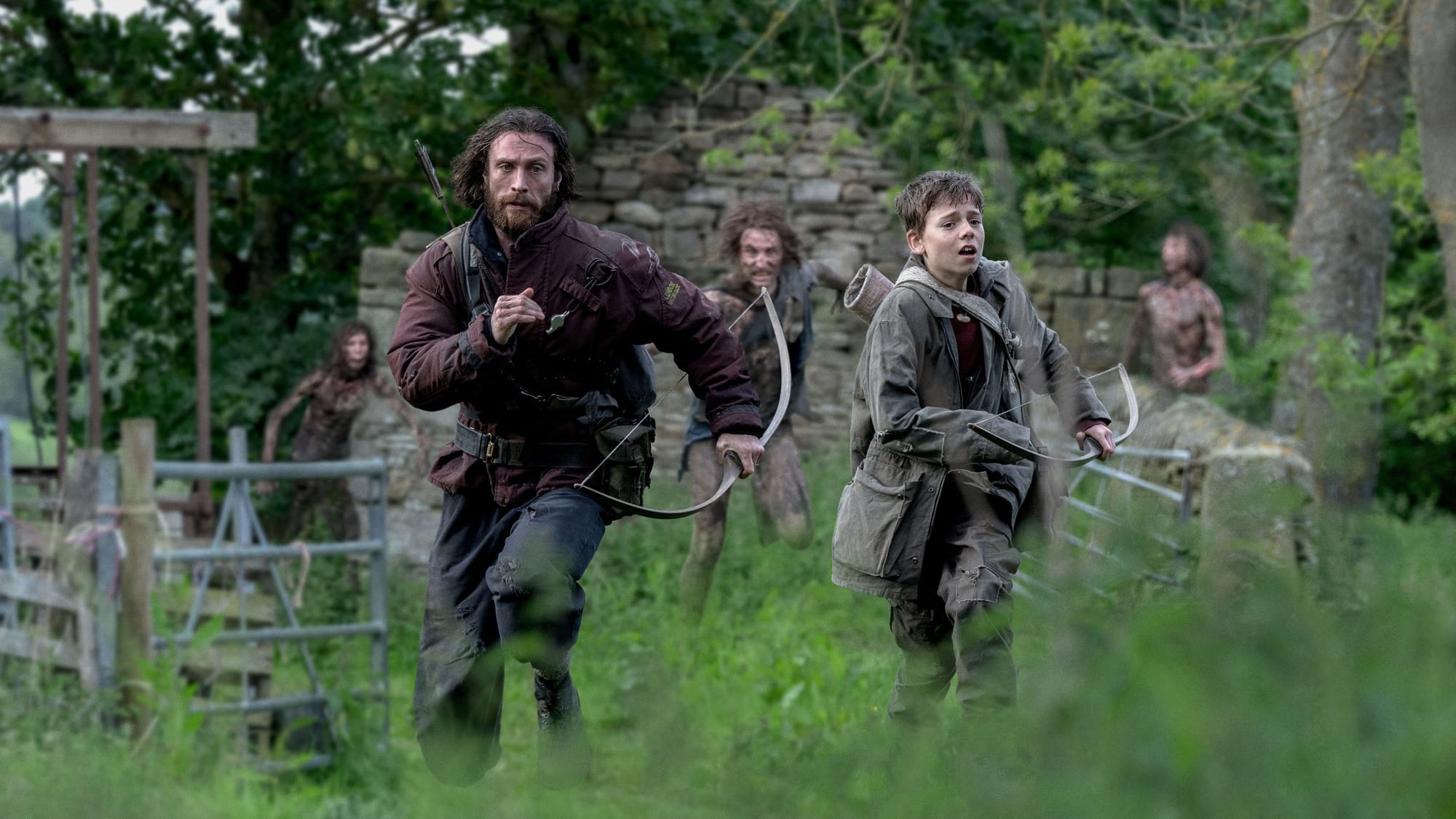
The film's core is essentially distilled and imbued within the Kelson character, instantly turned into a mythical figure of insanity based on little more than assumptions, slowly woven into legend by the same regressive agenda that refuses to engage with the unknown out of fear. Spike's journey to find him out of desperation to aid his mother reveals the split between those who still wish to retain their humanity and those who wish to shed it. Spike refuses to accept that his mother will simply live in agony until she dies, offering her both hope and protection from those who would abandon her, taking a chance out of love. Kelson presents as something out of eerie folk horror, a radioactive orange figure slathered in iodine who resides in a labyrinthine temple of bone like some kind of pagan deity – yet he's the sanest one of them all, mindfully navigating the landscape and creating tender monuments to those we've lost.
Kelson's ethos is rooted in death out of an urgency to highlight the importance of life, intentionally avoiding the kinds of violent ritualism that have become commonplace in settlements like Spike's. He treats the infected with a solemn respect, harshly contrasted against the violent insertion of aggressive, reactionary militarism. In a world wracked with loss and grief, drowning in pain and suffering, it's all we can do to accept our mortality and find ways to make our time matter. What's the point in living if it's spent in isolationist fear, gaining nothing but bloodlust as you slowly lose all of your humanity? There is love within us and we are capable of giving birth to something fresh and new even through the chaos and the darkness.
The earnestness of the film's emotional pleas and its lilting spiritual undercurrent are refracted through its hyperstylization, inverting the original film's grimy digital scuzz and blowing it up into the now chaotic, fragmented energy that occupies our minds. Boyle's approach almost feels like if De Palma had made a zombie movie, impressionistic filmmaking through cinematic technique and fervor. We are immediately removed from the past, yanked through the scanline haze of a buzzing CRT blaring the cheerful sounds of Teletubbies while it all gets splattered in blood and viscera. The past has been torn to shreds by modernity and we now live in an era of manic psychedelia, every inch of loose, burnt flesh highlighted by nauseating macro vision before it splatters onto the forest floor with a whip pan and a freeze frame bullet time burst of blood. It's all spliced together with alien, crimson night vision where eyes glow with white hot intent, intercut with footage of nationalistic thrusts of men charging to war, mindless rows of arrows soaring to sink into flesh. Only highlighted by the film's blended experimental soundtrack, the sounds of British indie rock combined with droning synths and screaming strings, the sonic fingerprint of a country set ablaze while the world crumbles around it.
There may be no bigger cinematic swing this year than the film's final moments, a cultural shattering that shocks the system back into a sort of nauseating unease, reminding that there remains a human element among the horrors that may rise far above the mindless wandering of the Alphas and their kind. The film drip feeds it throughout in a way that is fully fuel injected into this final sequence, visions of inverted crosses and demonic ritualism taking root with immediacy beyond the tenderness of Spike finding his place in the world and searching for something better. It can certainly be seen as an entirely asynchronous misstep that pulls the rug from the film's somber emotional arc, but really this vision of the unknown horrors that lie ahead for Spike alongside the imagery conjured by Jimmy's greasy blonde hair and velvet tracksuit only underline the film's punk deconstructions of British culture.
The world is unforgiving, and we have found ourselves falling through the decades in the face of mass death and infectious rage. We have lost something in the chaos of it all, and our isolationism and regressive ideals are slowly robbing the future of its own potential. Something better is possible. It has to be.
Memento amoris.


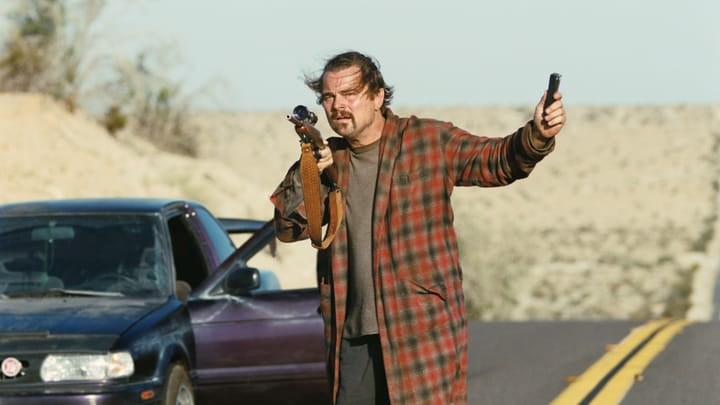
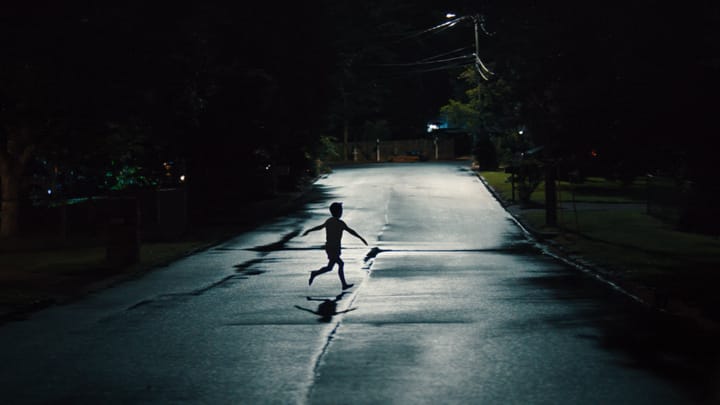
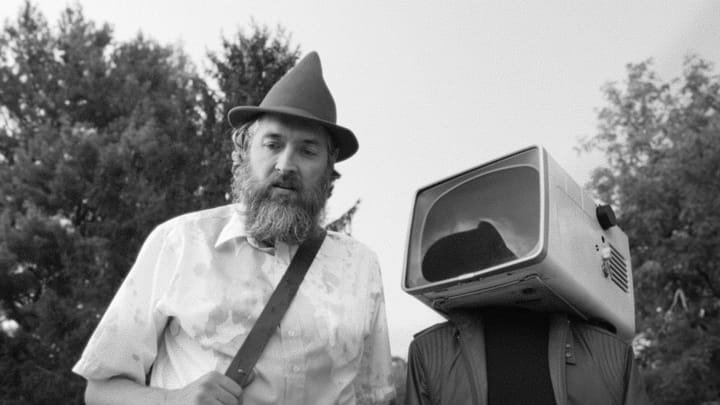
Comments ()